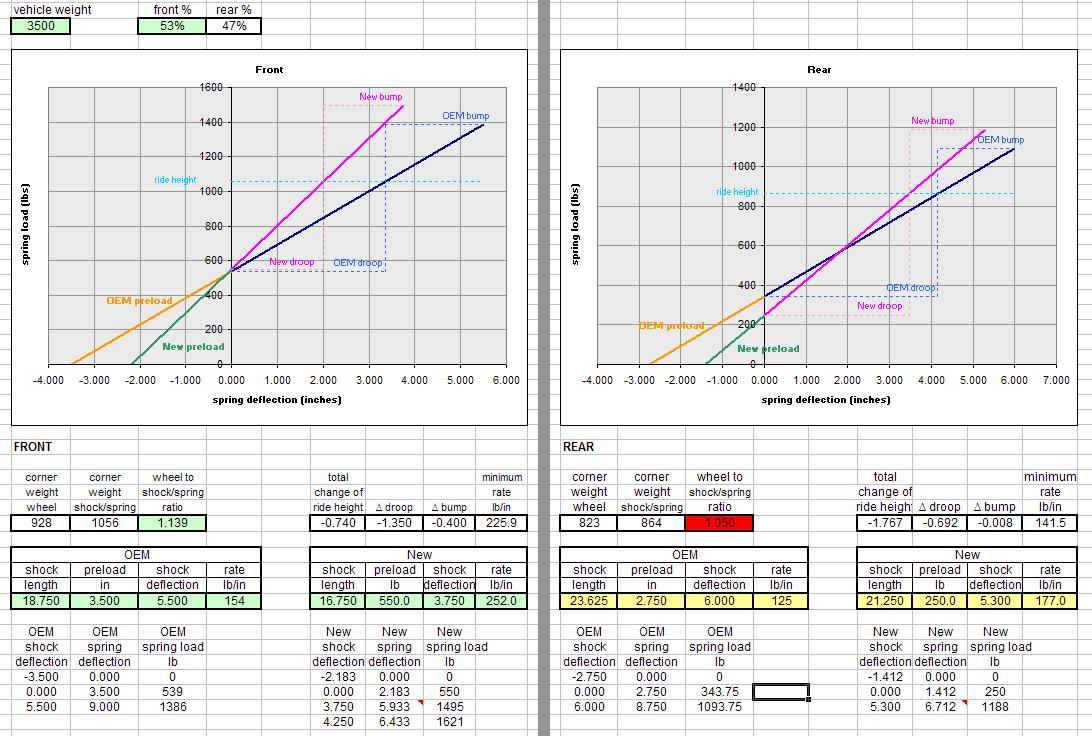| OE spring rates that I tested are 154 lb/in (front) and 125 lb/in (rear) and at ride height they are loaded to ~1056 lbsf (front) and 864 lbsf (rear). The difference here between the numbers you measured is the "wheel rate" or the wheel leverage ratio on the springs because the wheels are outboard of the springs creating a leverage arm... let's ignore wheel rate for this discussion to make everything a bit easier. Looking at the front only - to achieve 1056 lbsf with a 154 lb/in rate, the spring needs to be compressed 6.857", but the shocks only have 5.5" of total travel capability and you want to ensure there is still some shock travel remaining to absorb bumps. In OE form, the front shocks at ride height are setup to give 3.4" droop and 2.1" bump... droop multiplied by spring rate (3.4 x 154 = 524 lbsf), which is far from the 1056 lbsf needed to hold the car at ride height, so the springs must be preloaded by the difference when installed on the shock, front preload = 539 lbsf. Aftermarket coil-overs:
Most, if not all, coil-overs for the Z32 are shorter than OE shocks and have less travel capability. The front coil-overs I used here have only 3.75" travel capability (1.75" less than OE). This means there is less room to achieve the ride height load (1056 lbsf) so the coil-over manufacturers all go to much higher rate springs so they don't have to be preloaded to make it easier for the average person to install quickly and not get hung up with technical adjustments. If you want to run a lighter rate spring on a coil-over, you need to ensure you get a spring with enough travel capability, not just a longer spring, because longer does not necessarily mean it has more travel capability when it comes to shelf-stock springs. Also, a lighter rate spring will require preloading to ensure enough bump travel remains with the shorter shock travel. In the spreadsheet below I am comparing the stock spring/shock to a custom spring/coil-over scenario. Front:
OE rate = 154 lb/in
OE shock travel = 5.5" Custom rate = 252 lb/in
Coil-over travel = 3.75" yellow = OE preload
blue = OE travel (droop and bump)
green = custom preload
magenta = custom travel The dashed lines define droop and bump: Front:
OE droop = 3.4"
OE bump = 2.1"
(total travel = 5.5") Custom droop = 2.0"
Custom bump = 1.75"
(total travel = 3.75") The load to obtain ride height is the same for either scenario, but what can also be adjusted is the load at maximum bump... this custom front setup will have +100 lbsf over the OE setup at maximum bump.

|

